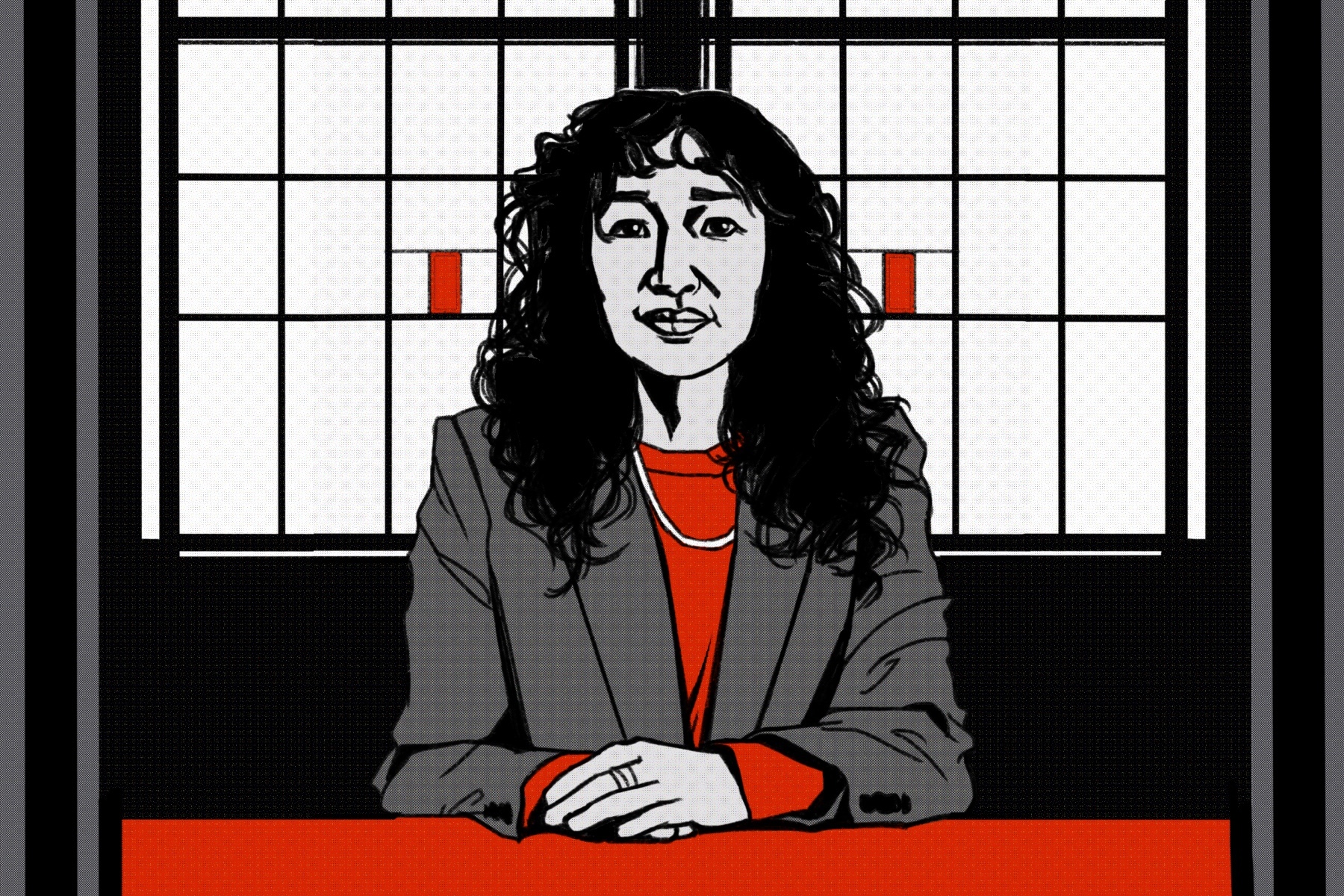“The Chair” on Netflix does more than add to the viewing pleasures of its audience. The six-episode miniseries follows the comedic hardships and trials of English department chair Professor Ji-Yoon Kim at a prestigious university named Pembroke. The cast of “The Chair” is a coterie of brilliant performers and the co-creators of the show do not falter when it comes to their genius.
Amanda Peet and Annie Julia Wyman are true multidimensional “turners” of our time, an actor-turned-writer in the case of the former and a Harvard-Ph.D.-turned-screenwriter in the case of the latter. The showrunners’ experiences in their respective fields shine through in the plot of “The Chair.” Oftentimes, the portrayal of predominantly male-run industries or male-dominated disciplines on screen sugarcoat events and put frosting on the bitter truth — that certain biases regarding gender, race and even age hinder people’s career progression. “The Chair” and its fundamentally delicious characters tell it like it is. There is a lot to unpack.
The Biases
Intersectionality comes to play in “The Chair” as gender and racial biases are frequently highlighted. It is a big deal for the first woman and person of color to be elected the chair of Pembroke’s English department. This is referred to as a step in the right direction to which many more must follow suit. At the university, 87% of the faculty is white and, to the audience’s amusement, Professor Kim’s photograph has been used on the college brochures for half a decade as some sort of false stamp of diversity and inclusion. These facts alone speak volumes.
Since mankind could call itself mankind, discrimination has inhibited the advancement of many. The road to success appears free of obstructions until a blockade of racism prevents you from moving forward or a barrier of sexism deters you from moving in specific directions. For characters like Professor Kim and Professor Yasmin McKay, these biases come at them on more than one side. Hurdles are put in front of them, and they jump as high as they can to overcome the obstacles. Still, they are seen as expected when they fail and anomalies when they succeed. For instance, no one expects a Korean woman to stand amid students to offer lectures on Emily Dickinson just as no one expects a Black woman to encourage students to tweet their favorite lines from Moby Dick. Correction: No one did.
Reflecting Contemporary Academia
College education in the 21st century is always making modifications. The way administrations operated 30 years ago is much different than today. Students have a critical say in their learning as well as their learning environment. With institutions like Title IX agreements and end-of-semester course evaluations in place, the discipline of teaching at a tertiary level is changing with the times. “The Chair” shows how professors who were teaching at Pembroke in its earlier years view such developments as consumer demands they would rather not conform to.
In the case of Professor Joan Hambling, the gift of sublime knowledge-giving is far too precious to cater to the immaturity of college students. This, of course, is not the belief of real-life college professors, who do not view course evaluations as consumer demands but as criteria for making improvements. “The Chair” does this merely for laughs, as is almost everything done and said by Professor Joan Hambling.
The Token White Woman
It is not every day that a white woman is used as a token character for onscreen productions. “The Chair” suspends the audience’s disbelief to an extent through the character Professor Hambling, played by Holland Taylor. She is the epitome of bluntness and pure female domination. As one of the oldest faculty members in the English department and its only woman, she has, as Taylor would put it, “no Fs left to give.” After 32 years at Pembroke, she doesn’t care for student feedback and is unbothered that she is wildly succeeding at not being popular.
Hambling is still thwarted by intersectional oppressions as sexism and ageism force her to stumble. Her male contemporaries are paid more even though they were hired by Pembroke at around the same time. She faces backlash from a student of hers on RateMyProfessors because the student in question was more concerned with her conspicuous age than sitting through a lecture of hers on 14th-century literature. Nevertheless, Hambling is a phenomenal character and is validly dubbed the greatest of all time.
https://www.instagram.com/p/CTANkzNCLgR/
The Reality
The real humor of “The Chair” lies in the spoken words. Everything said by the characters is a true reflection of academia in one or more respects. The academic patriarchy does entail the running of marathons and climbing of mountains for many women in the disciplines. It can be a struggle to ascend the ranks of one’s profession. Students do put pressure on their schools’ administrations to push for their interests. Some losses are wins too because even though Professor Kim eventually steps down from chair, another woman steps up to take her place. “The Chair” serves as both proof that intersectionality applies in places we don’t pay a lot of attention to and is a reason for people to listen and take note.

















